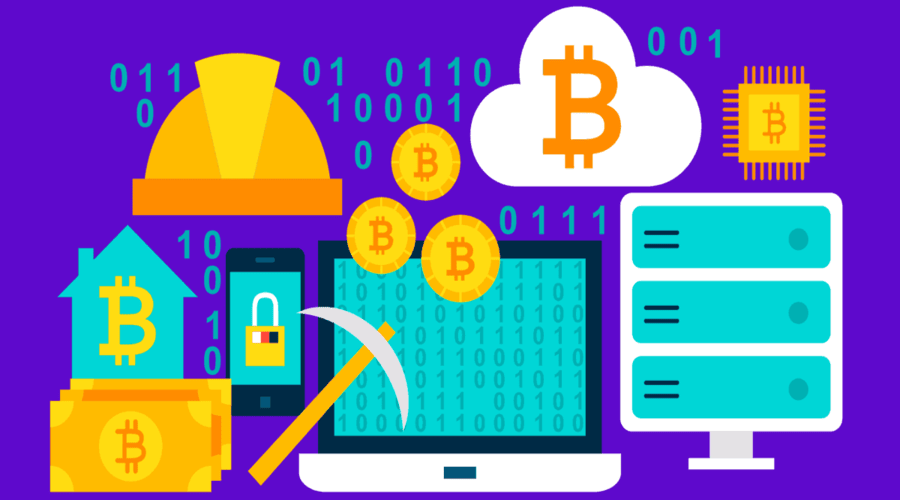In today’s digital age, where decentralized systems and cryptocurrencies have gained immense popularity, consensus mechanisms play a pivotal role in maintaining the integrity and security of these networks. One of the crucial factors that impact the performance of these mechanisms is network latency. In this article, we will explore the relationship between consensus mechanisms and network latency, their significance, and how they influence the overall efficiency of decentralized networks.
Introduction: Understanding Consensus Mechanisms
Consensus mechanisms are protocols used in decentralized networks to achieve agreement among participants regarding the state of the network and the validity of transactions. They ensure that all nodes in the network reach a consensus on the order and accuracy of transactions, preventing fraudulent or malicious activities.
The Importance of Network Latency in Consensus
Network latency refers to the delay or lag experienced in transmitting data across a network. In the context of consensus mechanisms, network latency can significantly impact the speed and efficiency of reaching consensus. High network latency can lead to delays in transaction confirmation, reduced throughput, and increased vulnerability to attacks.
Network latency holds significant importance in consensus mechanisms within decentralized networks. Low network latency ensures faster transaction confirmation, enhances overall system efficiency, and improves the user experience. It directly impacts the speed at which nodes communicate, reach consensus, and validate transactions. High network latency can introduce delays, increase the time required for transaction confirmation, and reduce the throughput of the network. Moreover, it can also make the network more vulnerable to attacks, as delayed communication leaves a larger window for malicious activities. Minimizing network latency is essential to maintain the integrity, security, and effectiveness of consensus mechanisms in decentralized networks.
Proof of Work (PoW) and Network Latency
Proof of Work is one of the most well-known consensus mechanisms, utilized by cryptocurrencies like Bitcoin. In PoW, miners compete to solve complex mathematical puzzles to validate transactions and add blocks to the blockchain. However, PoW can be computationally intensive, leading to higher network latency, especially when the network becomes congested.
Proof of Stake (PoS) and Network Latency
Proof of Stake is an alternative consensus mechanism that selects validators based on their ownership or “stake” in the network. Unlike PoW, PoS consumes significantly less computational power, resulting in lower network latency. However, PoS networks may face challenges in reaching consensus when the number of validators is limited.

Delegated Proof of Stake (DPoS) and Network Latency
Delegated Proof of Stake introduces the concept of voting for delegates who validate transactions on behalf of the network. DPoS aims to increase scalability and reduce network latency by utilizing a smaller set of trusted validators. However, relying on a limited number of validators can pose centralization risks.
Practical Byzantine Fault Tolerance (PBFT) and Network Latency
Practical Byzantine Fault Tolerance is a consensus mechanism designed for distributed systems that can tolerate malicious behavior. PBFT achieves consensus through a series of rounds of message exchanges. While PBFT can provide faster confirmation times compared to PoW and PoS, network latency can still impact its performance. Practical Byzantine Fault Tolerance (PBFT) is a consensus mechanism designed for distributed systems that can tolerate malicious behavior. While PBFT offers faster confirmation times compared to some other consensus mechanisms, it is not immune to the impact of network latency. Network latency can introduce delays in the message exchanges between nodes, potentially slowing down the consensus process. Higher network latency can affect the overall performance of PBFT by increasing the time required to reach agreement and validate transactions. Therefore, minimizing network latency and ensuring efficient communication between nodes are crucial for maintaining the effectiveness of PBFT in decentralized networks.
Proof of Authority (PoA) and Network Latency
Proof of Authority relies on a set of approved authorities or validators to validate transactions. These authorities are typically known and trusted entities. PoA offers faster block confirmation times and lower network latency, making it suitable for certain use cases. However, the centralized nature of PoA can raise concerns regarding network security.
Comparison of Consensus Mechanisms and Network Latency
When comparing consensus mechanisms, network latency is a critical factor to consider. PoW and PBFT can experience higher network latency due to the computational requirements and message exchanges involved. On the other hand, PoS, DPoS, and PoA generally exhibit lower network latency, allowing for faster transaction confirmation and higher throughput. When comparing different consensus mechanisms, network latency is an important factor to consider. Proof of Work (PoW) and Practical Byzantine Fault Tolerance (PBFT) tend to have higher network latency due to computational requirements and message exchanges. On the other hand, Proof of Stake (PoS), Delegated Proof of Stake (DPoS), and Proof of Authority (PoA) generally exhibit lower network latency. These mechanisms rely on fewer computational resources or a limited number of trusted validators, allowing for faster transaction confirmation and higher throughput. Understanding the relationship between consensus mechanisms and network latency is essential in selecting the most suitable approach for decentralized networks based on their specific needs and requirements.
Mitigating Network Latency Challenges
To address the challenges posed by network latency, various techniques and optimizations can be implemented. These include utilizing faster and more reliable network infrastructure, implementing parallel processing, optimizing consensus algorithms, and exploring layer-two scaling solutions such as payment channels or sidechains.
- Optimize Network Infrastructure:
- Ensure high-speed and reliable network connections between nodes.
- Use quality network equipment and technologies to minimize latency.
- Implement Caching Mechanisms:
- Utilize caching to store frequently accessed data closer to the nodes, reducing the need for network requests.
- Implement content delivery networks (CDNs) to cache and serve static content efficiently.
- Utilize Compression Techniques:
- Compress data before transmitting it over the network to reduce the amount of data transferred.
- Implement algorithms such as GZIP to compress HTTP responses.
- Implement Parallel Processing:
- Break down tasks into smaller sub-tasks and process them simultaneously to reduce overall processing time.
- Utilize multi-threading or distributed computing techniques to leverage the power of multiple processors.
- Optimize Consensus Algorithms:
- Fine-tune consensus algorithms to minimize the number of network messages and exchanges required for reaching consensus.
- Implement efficient algorithms that can handle latency and delays gracefully.
- Explore Layer-Two Scaling Solutions:
- Implement layer-two scaling solutions like payment channels or sidechains to offload some transactions from the main blockchain, reducing congestion and latency.
- Use Peer-to-Peer (P2P) Networking:
- Utilize P2P networking to distribute the load across nodes and reduce dependency on centralized servers.
- Peer-to-peer networks can enable direct communication between nodes, minimizing latency.
- Implement Quality of Service (QoS) Mechanisms:
- Prioritize network traffic based on the importance and urgency of data.
- Implement QoS mechanisms to allocate network resources effectively and reduce latency for critical tasks.
- Explore Edge Computing:
- Deploy computing resources closer to the network edge to minimize the physical distance between nodes, reducing latency.
- Edge computing enables faster processing and response times.
- Regularly Monitor and Optimize:
- Continuously monitor network performance and latency metrics.
- Identify bottlenecks and areas of improvement and optimize the network accordingly.
By implementing these strategies, network latency challenges can be mitigated, ensuring smoother and more efficient consensus mechanisms within decentralized networks.
Future Trends in Consensus Mechanisms and Network Latency
As the technology landscape evolves, consensus mechanisms will continue to evolve as well. Innovations such as sharding, proof-of-concept, and hybrid consensus models are being explored to improve scalability and reduce network latency. Additionally, advancements in network infrastructure and the adoption of emerging technologies like 5G will likely contribute to reducing network latency further. As technology continues to evolve, future trends in consensus mechanisms and network latency focus on scalability and efficiency. Innovations such as sharding, proof-of-concept, and hybrid consensus models are being explored to improve scalability. Additionally, advancements in network infrastructure and the adoption of emerging technologies like 5G contribute to reducing network latency further.
Conclusion
Consensus mechanisms are crucial for maintaining the integrity and security of decentralized networks. Network latency plays a vital role in the performance of these mechanisms, impacting transaction confirmation times, throughput, and overall network efficiency. It is essential to consider the strengths and weaknesses of different consensus mechanisms in relation to network latency when designing and implementing decentralized systems.
FAQs
Q1: What is the primary purpose of consensus mechanisms in decentralized networks? Consensus mechanisms ensure agreement among participants regarding the state of the network and the validity of transactions, preventing fraudulent or malicious activities.
Q2: How does network latency affect consensus mechanisms? Network latency can lead to delays in transaction confirmation, reduced throughput, and increased vulnerability to attacks within decentralized networks.
Q3: Which consensus mechanisms exhibit lower network latency? Proof of Stake (PoS), Delegated Proof of Stake (DPoS), and Proof of Authority (PoA) generally exhibit lower network latency compared to Proof of Work (PoW) and Practical Byzantine Fault Tolerance (PBFT).
Q4: What can be done to mitigate network latency challenges in consensus mechanisms? Optimizing network infrastructure, implementing parallel processing, optimizing consensus algorithms, and exploring layer-two scaling solutions are some techniques to mitigate network latency challenges.
Q5: What are some future trends in consensus mechanisms and network latency? Future trends include the exploration of sharding, proof-of-concept, and hybrid consensus models, as well as advancements in network infrastructure and the adoption of technologies like 5G.





